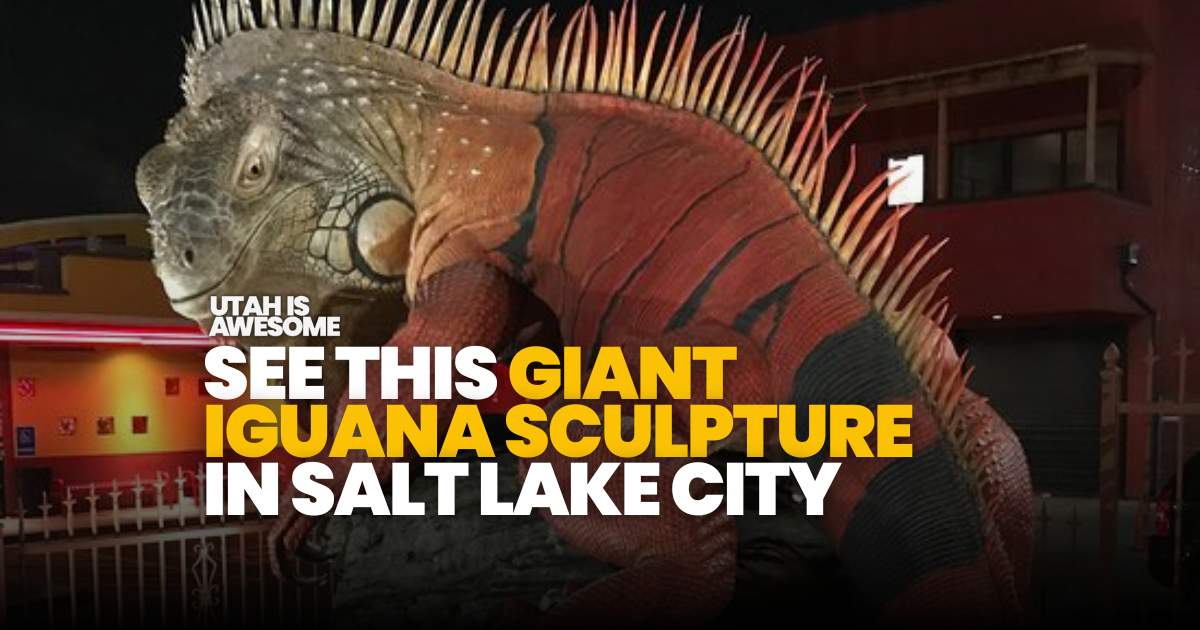How well do you know the Beehive State?
1. Utah is home to the world’s heaviest organism – The Trembling Giant (Pando) in Fishlake National Forest consists of 47,000 genetically identical trees sharing one root system and is over 80,000 years old
2. Contains the world’s largest natural rock arch collection – Arches National Park has over 2,000 natural stone arches, more than anywhere else on Earth
3. Rainbow Bridge is the world’s largest natural bridge – Standing 290 feet tall and 270 feet across
4. The Great Salt Lake is 9 times saltier than the ocean – It’s the largest saltwater lake in the Western Hemisphere
5. Bonneville Salt Flats span over 30,000 acres – They’re one of the world’s largest salt flat formations
6. Utah has the most diverse geology of any state – It features three distinct regions: Rocky Mountains, Colorado Plateau, and Basin and Ridge Region
7. Kings Peak is Utah’s highest point at 13,528 feet – The Uinta Mountains are unique because they run east-west instead of north-south
8. Levan is “navel” spelled backward – The town sits in Utah’s geographic center, making it the state’s “navel”
9. Kanab is called “Little Hollywood” – Numerous Western movies were filmed there, including scenes from Planet of the Apes
10. The television was invented by a Utah native – Philo T. Farnsworth from Beaver, Utah, sketched his TV concept in high school chemistry class
11. The Frisbee was invented by Walter Morrison from Utah – He got the idea from throwing cake tins and pie pans on the beach
12. Utah had America’s first department store – Brigham Young founded ZCMI in 1868, which operated for 130 years
13. The first KFC franchise opened in South Salt Lake in 1952 – The original location is now preserved as a museum, according to Babs De Lay with Urban Utah Homes & Estates
14. The first transcontinental railroad was completed at Promontory Summit – The famous “Golden Spike” ceremony happened there in 1869
15. Utah is the only state with a cooking pot as an official state symbol – The Dutch oven was designated the state cooking pot
16. Green Jell-O is the official state snack – Named in 2001 due to its popularity among residents
17. The state tree was changed in 2014 – Fourth graders successfully petitioned to change it from blue spruce to quaking aspen
18. Utah has unique liquor laws – Restaurants once had to use “Zion Curtains” to hide bartenders mixing drinks from children
19. 60% of Utah’s population is Mormon – Making it the most religiously homogeneous state in the nation
20. Utah residents are the most charitable in America – They rank first in volunteer rates and charitable giving
21. Salt Lake City has the youngest population in the US – One-third of residents are under 18
22. Utah has more plastic surgeons per capita than anywhere else – Salt Lake City leads the nation in this category, according to Fox 13 News
23. Seagulls saved Mormon pioneers in 1847 – They ate cricket swarms that threatened crops, making the seagull Utah’s state bird
24. Utah was part of a dinosaur-filled landmass – 75 million years ago, it was part of Laramidia, home to the massive 23-foot Utahraptor
25. The state claims “The Greatest Snow on Earth” – Due to high elevation and desert climate creating dry, powdery snow
26. Lagoon is the oldest operating amusement park in the American West – Its “Old Woodie” roller coaster is the nation’s third oldest, (By the way, check out this great summary of Lagoon’s history by Salt Lake Magazine)
27. The Sundance Film Festival takes place in Park City – One of the world’s most prestigious film festivals happens annually
28. Salt Lake City hosted the 2002 Winter Olympics – Olympic venues are still used for training and tourism
29. Salt Lake City is home to the nation’s leading rubber chicken manufacturer – An unexpectedly specific claim to fame










